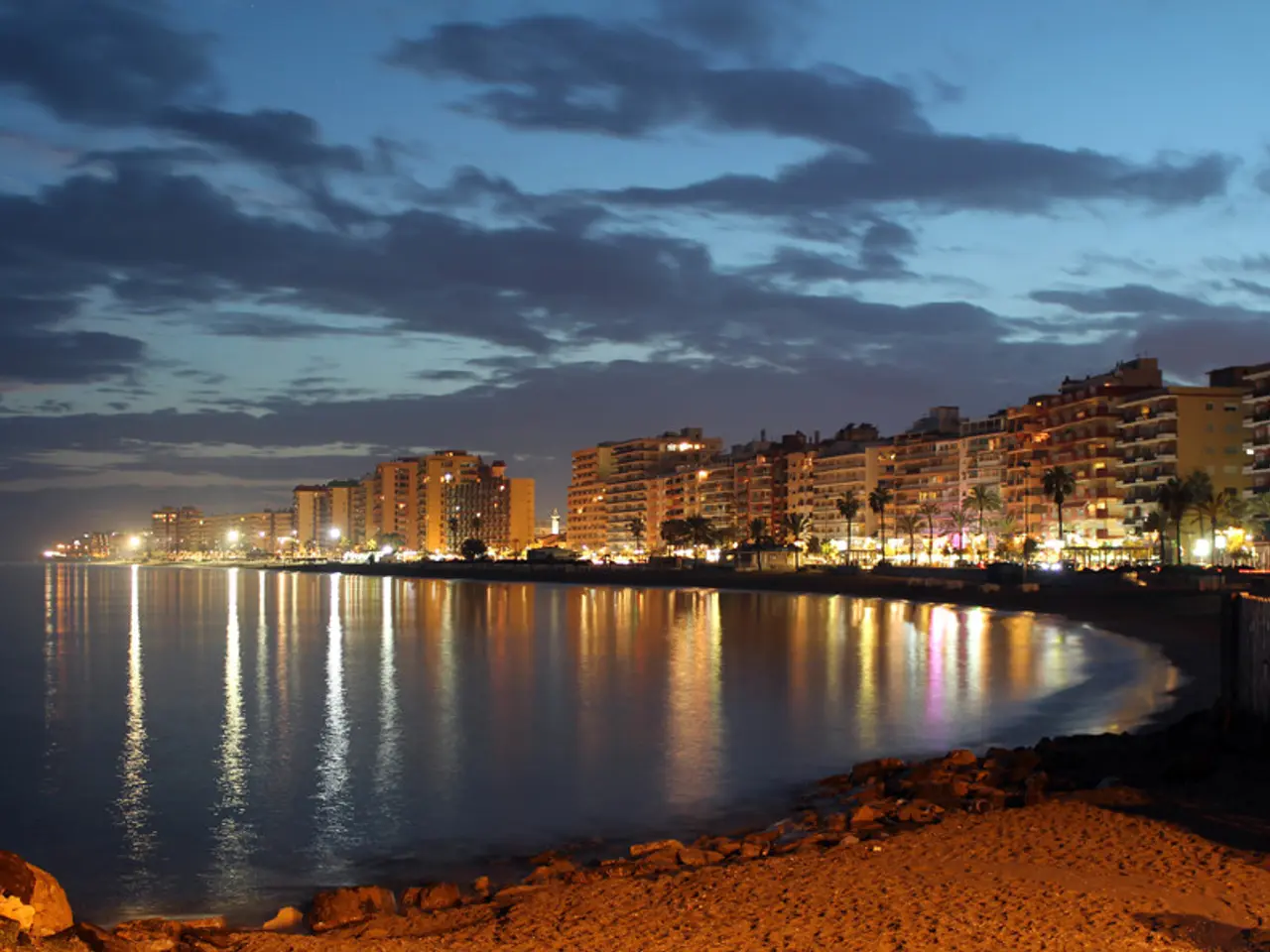Which locations impose the steepest tourist taxes?
Porto's Moderate Tourist Tax: A Simplified Approach
In the heart of Portugal, Porto stands out as a popular tourist destination, offering a unique blend of history, culture, and gastronomy. One aspect that sets it apart from other European cities is its tourist tax, which is moderate compared to some of the higher or percentage-based taxes implemented by other cities.
As of 2025, Porto charges a tourist tax of €3.00 per night, per person aged 12 or older, with a maximum charge applying for up to seven consecutive nights per stay. This rate is fixed year-round, regardless of season or type of accommodation. This contrasts with cities like Amsterdam, which applies a 12.5% tourist tax based on the total booking value as part of its strategy to manage overtourism.
The city's tourist tax revenue is predictable, thanks to its fixed rate and seven-night cap. This is a significant departure from percentage-based taxes like Amsterdam's, which vary with booking price and length. Porto's approach aligns with other Portuguese municipalities that charge flat nightly taxes, often between €1 and €4, depending on location.
The Porto City Council implemented the Municipal Tourist Tax in 2018 to address the city's growing activity. In 2022, the tourist tax in Porto reached nearly 49.51 million euros. By April 2025, revenue from the municipal tourist tax totaled 9.3 million euros.
In comparison, Lisbon, Portugal's capital, charges the highest tourist tax in Portugal at four euros per night since September 2021. In nearly ten years, the tourist tax in Lisbon has generated over 260 million euros for the city's coffers. Lisbon also began charging a tourist tax on sea arrivals in 2024, two euros per passenger over 13 disembarking from a cruise ship in transit.
The Secretary of State for Tourism, Commerce, and Services in Portugal has argued for the "rationalization" of the application of the tourist tax in Portugal. The current disparity and municipal management do not always guarantee "added value and advantages" for the sector.
It's worth noting that tourist taxes are charged in at least 40 municipalities in Portugal. While exact figures for Porto's total tourist tax income in 2025 are not provided, its fixed €3 per night rate and seven-night cap allow for predictable contributions.
In conclusion, Porto's tourist tax sits at a mid-to-high level within Portugal and is modest compared with some other European cities that are implementing higher or percentage-based taxes to address tourism impacts and fund urban services. The fixed per-night approach in Porto is simpler compared to variable or tiered systems seen elsewhere in Europe.
Sources: 1. Portugal News 2. The Portugal News 3. CoStar 4. VisitPorto 5. Euractiv
- The moderate tourist tax in Porto, coupled with the city's appealing lifestyle, has attracted increased investments in real estate and finance, fostering business opportunities for local and international entrepreneurs interested in the tourism sector.
- With its predictable revenue and manageable rates, Porto's tourist tax scheme encourages travelers to extend their stays, thus boosting the local tourism industry and enhancing the overall travel experience for visitors.
- Given the success of Porto's tourist tax model, other European cities might consider adopting a similar per-night approach to strike a balance between generating revenue from tourism and ensuring an enjoyable lifestyle for both residents and visitors.




